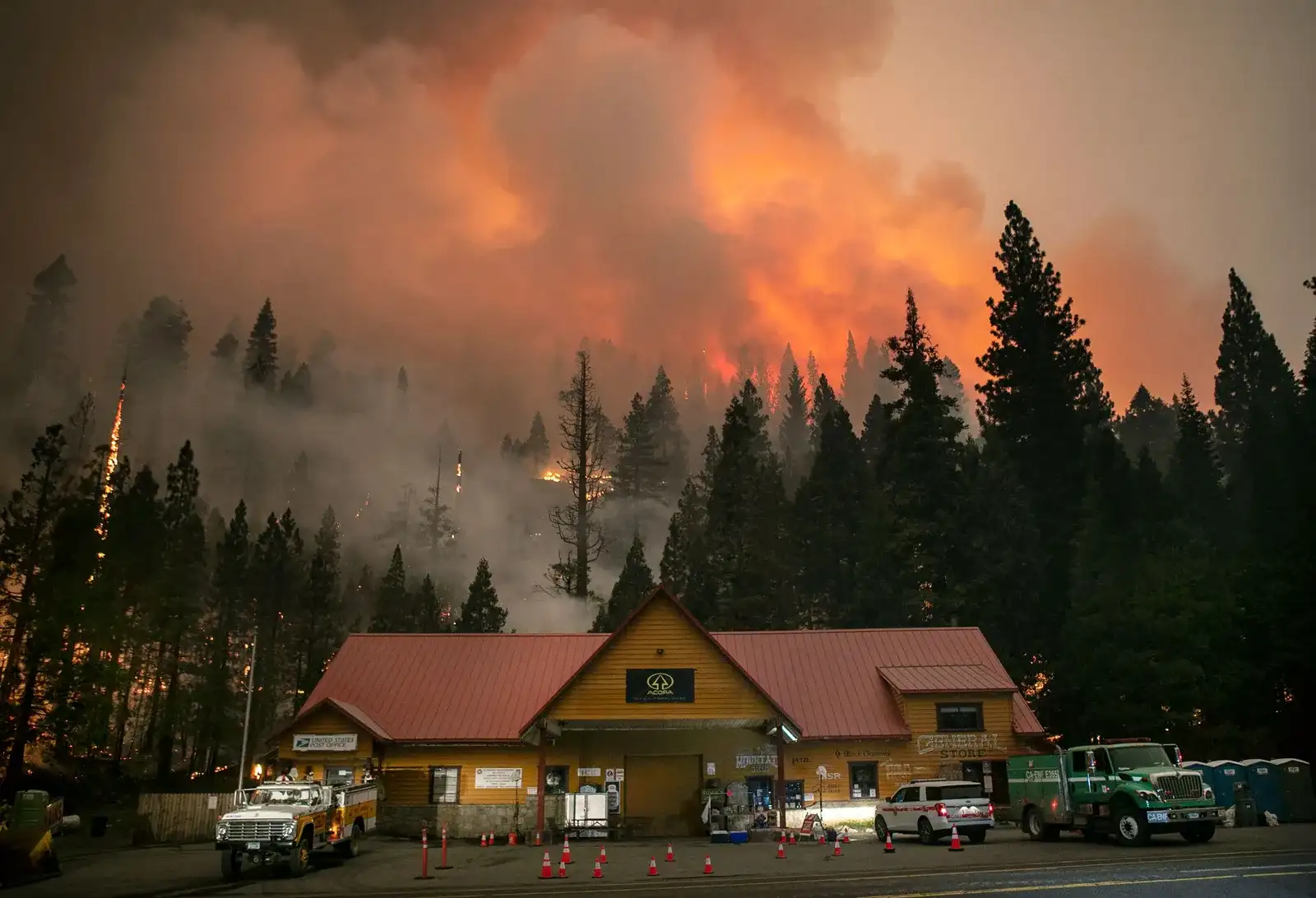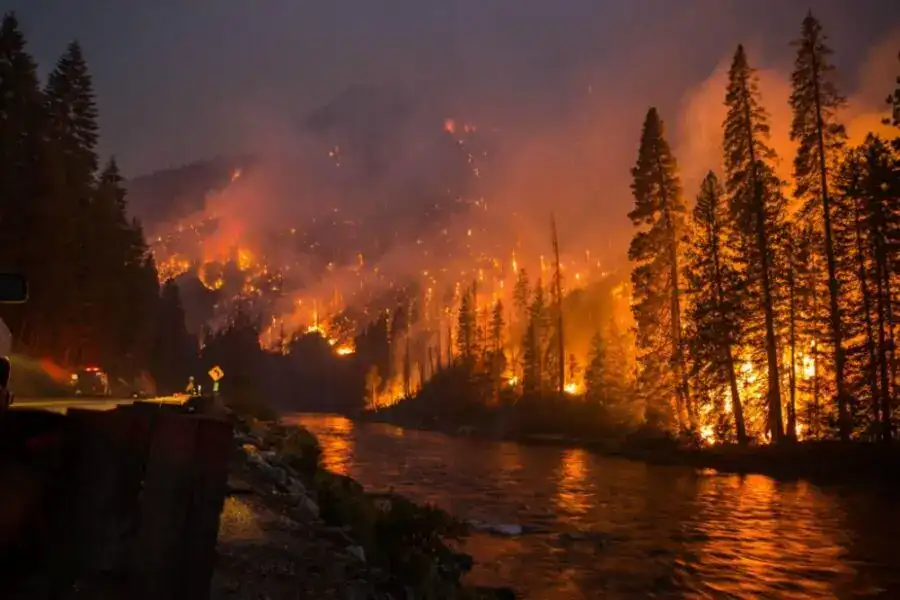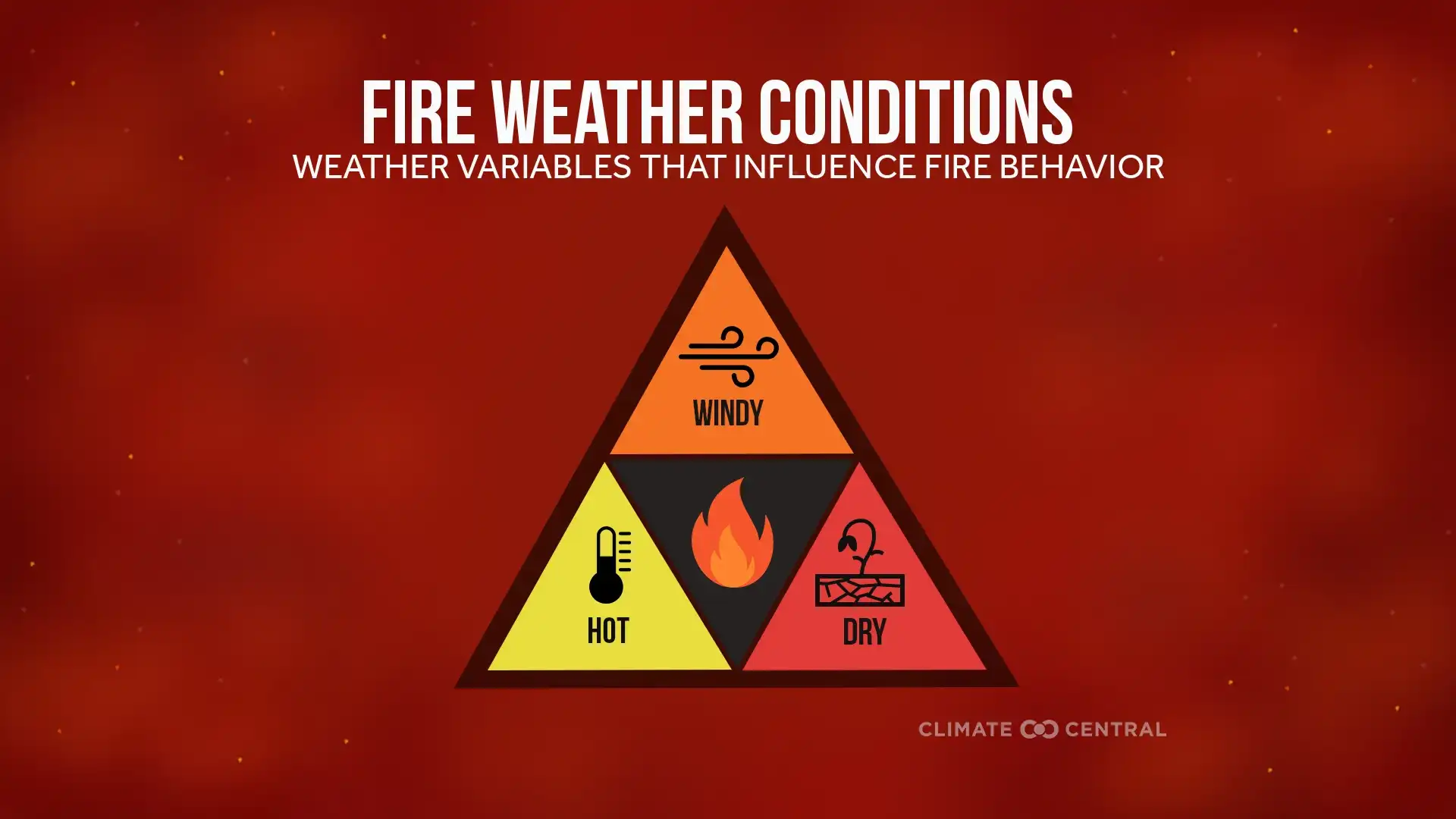While it might seem harmless when a breezy, sunny day triggers a fire weather alert, such notifications are anything but routine. Fire weather describes specific atmospheric conditions that dramatically increase the risk of wildfires and these events are growing more frequent as climate patterns shift.
From the western United States to parts of Australia and the Amazon, fire weather is no longer just a seasonal concern it’s a climate-driven phenomenon demanding close attention.
What Is Fire Weather?
Fire weather refers to weather conditions that create an environment conducive to the ignition and spread of wildfires. Though it can happen at any time of year, it peaks during late summer and autumn, when fuels like dry grasses, leaves, and dormant vegetation are plentiful and humidity levels typically drop.
This phenomenon affects various parts of the world, but areas already prone to wildfires such as California, the Mediterranean, and parts of South America and Africa face the most elevated risks.
Conditions That Trigger Fire Weather
Fires require three ingredients: heat, oxygen, and fuel. Certain meteorological patterns can combine to deliver these elements in dangerous doses:
- High temperatures: Warm air accelerates evaporation, drying out grasses, shrubs, and forest litter, making them more flammable.
- Low precipitation: A prolonged lack of rain leaves vegetation dry and vulnerable to combustion.
- Low soil moisture: Dry soil equals stressed, thirsty plants conditions that heighten their combustibility.
- Low relative humidity: When there’s little moisture in the air, fuels dry out faster, increasing fire risk.
- Gusty winds: Wind fans the flames, supplies oxygen, dries out fuels further, and spreads embers across distances.
One red flag is the passage of a dry cold front followed by gusty winds and low humidity. High-pressure systems, particularly in the upper atmosphere, can act like heat domes trapping hot, dry air and creating the perfect storm for fire weather conditions.

How Is Fire Weather Monitored?
Recognizing the tight connection between weather and fire behavior, the National Weather Service (NWS) collaborates with land management agencies to issue two critical alerts: fire weather watches and red flag warnings.
Fire Weather Watch
A watch signals that conditions may become favorable for wildfire ignition and spread within 24 to 72 hours. This gives fire crews and the public a window of time to prepare.
Red Flag Warning
A red flag warning means that fire conditions are either occurring now or will shortly usually within 12 to 24 hours. Any fire that starts during this window is likely to spread rapidly and prove difficult to contain.
These alerts are based on red flag criteria, which vary by region but usually include:
- Winds of 15 mph or greater (measured 20 feet above ground).
- Relative humidity of 25% or less, typically in the afternoon.
- Fuel moisture levels at or below 10% meaning dry leaves and grasses can catch fire easily.
Fire Weather and Climate Change
Wildfires have always existed, but the frequency, intensity, and duration of fire weather seasons are intensifying and climate change is largely to blame. Research shows fire weather seasons have extended by 19% globally across vegetated areas between 1979 and 2013.
Longer Fire Seasons and Greater Danger
Western U.S. forests, for example, now experience an additional eight days of fire weather annually compared to previous decades. The frequency of unusually long fire weather seasons has also jumped by as much as 53% worldwide.

Case Study: California’s Autumns
In California, rising autumn temperatures combined with decreasing precipitation have driven a 20% increase in fire weather indicators since the 1980s. Forecasts predict this could rise another 25% by the end of the century a sobering reality for a state already grappling with devastating wildfires.
How to Stay Safe During Fire Weather
On fire weather days, minimizing the potential for ignition is crucial. Simple behavioral changes can prevent a small spark from turning into a large-scale disaster.
What You Can Do:
- Delay activities involving open flames grilling, welding, or using fire pits.
- Clear your yard of dry debris like leaves, brush, and flammable waste.
- Never drive or park over dry vegetation heat from your vehicle can ignite a fire.
- Dispose of cigarette butts in proper receptacles, not on the ground.
- Report smoke, fire, or risky behavior to local emergency services immediately.
To stay ahead of fire threats, consult NOAA’s Fire Weather Outlooks for regional forecasts and preparedness information.
A Changing Atmosphere, A Growing Threat
Fire weather is no longer a rare seasonal occurrence it’s becoming a persistent challenge shaped by rising global temperatures and shifting precipitation patterns. As communities adapt, monitoring systems and public awareness are critical tools for minimizing wildfire risk.
Understanding how fire weather forms, what drives it, and how to respond can make the difference between preparedness and peril especially in an era where every spark has the potential to ignite a crisis.





